Artificial intelligence (AI) is gradually establishing itself as a major creative device in the music industry. According to a recent study by British music distribution company Ditto Music[1], 59.5% of artists surveyed are already using AI in their creative processes. However, this musical revolution is arousing passionate reactions, oscillating between wonder and apprehension.
On the one hand, AI is the new ally of artists, boosting their inspiration and expanding their creative horizons. Its uses are as diverse as they are innovative, from writing lyrics and mixing tracks to designing album covers and creating new interpretations. What's more, audiences are also thrilled by these autonomous creations, which go viral. There are many examples of this. The cover of singer Angèle's song "Saiyan"[2] with an artificial voice, which racked up 7.2 million views on YouTube, or the 15 million views generated on TikTok by the track "Heart on my Sleeve" with the voices of Drake and The Weeknd, show how AI is metamorphosing the musical universe.
On the other hand, these self-learning systems, now capable of conceiving original music or having songs performed by artists who have never sung them, give rise to great concern. Isn't it disturbing that anyone can market and distribute works and performances protected by intellectual property rights?
This revolution, which is redefining the artistic landscape and overturning traditional creative methods, raises new legal issues. Lawmakers are now faced with the need to regulate the use of AI at all stages of the creative process. Debates are therefore oscillating between the protection of works and performances manipulated by AI systems to create (I) and the question of how to protect new creations generated by these machines (II).
I. The status of works and performances manipulated by AI
Generative AIs will use large quantities of data to automate artistic production. These systems, powered by machine learning based on data sets, become the architects of artistic content. However, most of this training data is protected by copyright and related rights. The question then arises: do we need to obtain the authorization of copyright holders for this operation?
In this respect, the European legislator, through the "Digital Single Market" directive of April 17, 2019, introduces two exceptions for text and data mining, thus eclipsing the obligation to seek their authorization[1] The first is an exception limited to scientific research. The second, less restrictive, exception deserves particular attention. In fact, it authorizes the reproduction of protected content "whatever the purpose of the search", as long as rights holders do not object.
Although this exception does not completely erase the monopolies of rights-holders, it in no way guarantees effective protection for artists. Indeed, access to protection by copyright and related rights is conditional on the completion of a process that is very difficult to put into practice on a large scale. 2] Moreover, in a context where AI is seen as a vector of economic competition for artists, is it really relevant for them to be able to assert their rights onlyafter the infringement has occurred?
Although performers and authors can only with difficulty prevent the incrementation of their art within AI systems, the current legal framework does provide unambiguous protection for the author of the reinterpreted work in terms of his or her economic and moral rights. The author's prior authorization will therefore be required to reproduce and communicate the modified musical work to the public. The producer's authorization will also be required, on the basis of article L.213-1 of the CPI, if the instrumental from a pre-existing fixation is used to create the new work. However, for the performer, it will be difficult to obtain protection on the basis of his neighbouring right, unless the reconstituted vocal track makes it possible to detect the previous fixations of his interpretations manipulated for this purpose. All the same, he still has the monopoly offered by his personality right, and more specifically his right to his voice, which he can oppose, on the basis of article 9 of the Civil Code, to the person at the origin of his broadcast. [3]
II. The copyrightability of AI-generated works
Generative AIs are part of a legal framework marked by the pre-eminence of the author as a human being. Specifically, for a work to be protected by copyright, it must be original, i.e. revealing the author's personality. The author's personality, through originality, then infuses all copyright, justifying the existence of non-transferable, inalienable and perpetual moral rights. This requirement, common to most national legislations, calls for an examination of the degree of human intervention to determine the protectability of the AI-generated work. Two hypotheses need to be distinguished: AI as a tool at the service of human creation, and AI as an autonomous creator.
In cases where AI assists human creation, the individual remains in control of his or her creation. The use of this tool does not de facto exclude the expression of the author's personality. A musical work created with the help of AI can therefore be protected under copyright law if it bears the imprint of the author's personality.
In the case of an AI that resembles an autonomous creator, the creation is the result of an algorithmic calculation. In the current legal context, the instructions given to the machine by the AI user are not sufficient to characterize the imprint of his or her personality. 1] The concept of originality as envisaged in positive law therefore excludes fully automated creations from the scope of copyright. This total absence of protection, in addition to presenting the risk of slowing down innovation, could be prejudicial in that it could be circumvented. Indeed, a natural person could well conceal the entirely automated nature of the work in order to benefit from copyright protection. Not protecting these works would therefore ultimately be detrimental to artists.
If the current legal framework seems unsuited to generative AI, we can nevertheless hope that the forthcoming European regulation, the "Intelligence Artificial Act", which can be expected to come into force in 2026, will fill the gaps by placing the interests of artists at the heart of the debate. Upstream, for the use of pre-existing works by AI, it will be necessary to demand transparency of training data to enable authors to exercise their right of opposition. Downstream, for AI products, it will be necessary to bring these autonomous creations within the scope of the law. In this respect, several solutions can be envisaged, such as the creation of a sui generis right along the lines of the protection afforded to databases, or a special copyright, like that applying to software.
In short, the challenge for the European legislator will be to enable music industry players to seize the new opportunities offered by artificial intelligence systems, while ensuring the enforceability of intellectual property rights against them.
Claire Prugnier and Mansiga Muhunthan
[1] P. Vicky, "In the music industry, 60% of artists are reportedly already using AI", April 26, 2023, Tsugi Magazine. [https://www.tsugi.fr/dans-lindustrie-musicale-60-des-artistes-utiliseraient-deja-des-ia/#:~:text=L'use%20of%20intelligence,AI%20in%20their%20process%20cr%C3%A9ative.] or [https://mbamci.com/2023/07/ia-musique-industrie-evolution/#:~:text=Des%20précisions%20montrent%2066%25%20feraient,recours%20dans%20leur%20processus%20créatif.]
[2] Originally performed by Gazo and Heuss l'Enfoiré
[3] Transposed in France by article L122-5 of the CPI, which refers to article L.122-5-3 for further details.
[4] Ophélie Wang, "AI et création: pas de régulation par le droit d'auteur", In Dalloz Actualité, 10/05/2023.
[5] Vincent Varet, "AI cover and artists' rights", In Legipresse 2022.
[6] Alexandra Bensamoun, "IA générative et création musicale, vers une modification du droit?", In Le Club des juristes 4/05/2023


